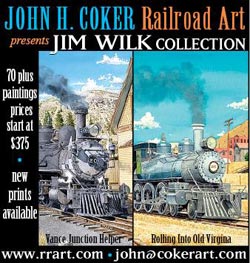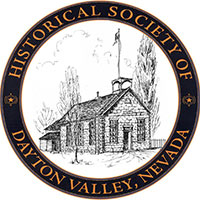

Yosemite Short Line Railway Company.
New Findings
by Mark Steven FrancisRecent findings keep adding to the story of the Yosemite Short Line Railway Company (YSLRC). Staff at the Carlo M. De Ferrari Archive in Sonora, the repository for Tuolumne County’s official records, uncovered the original contracts for construction of the railway. With the contracts is the letter of transmission by attorneys Solinsky and Wehe in San Francisco where the contracts were signed and notarized. The documents were sent to the Tuolumne County Recorder in Sonora, Richard Inch, to be filed rather than recorded.
For reasons yet to be known, the construction of the 50-mile line to terminate at the Tuolumne Big Trees was divided into five 10-mile segments with a separate, but identical contract for each portion designated Section A through Section E. Each contract was signed by F.J. Solinsky as President and John Hancock as Secretary of the Yosemite Short Line Railway Company. The contracting company was – no surprise - the Tuolumne Construction Company, incorporated in Nevada with its office and principal place of business in San Francisco. Signing for the contractor were T.S. Bullock as President and S.D. Freshman as Secretary. All five contracts were signed on July 29, 1905.
The contracts called for a thirty-inch gauge steam railway to be built from a point connecting with the Sierra Railway at the “so-called Oil Siding” about one mile southwest of Jamestown. The space for the start date of construction is blank in all five contracts while the date of “operation” is stated as on or before June 1, 1906. Terms and conditions specified in each contract included maximum grades of four percent and curves limited to a maximum of ninety degrees. Roadbed on fills could be no less than seven feet; on cuts, eight feet. Where track curves exceeded fifty degrees it was to “braced with pressed steel bracing.” The contractor was responsible for all aspects of construction including bridges, trestles, and culverts. Ties were to be of fir, cedar, pine, or redwood measuring five inches by eight inches by five feet; rail was to be thirty pounds per linear yard.
The bridge to be constructed over the Tuolumne River near Jacksonville (estimated to be 270 feet in length) was to be strong enough to permit a 30-ton locomotive to pass over safely. Approaches to the bridge would be either wood or steel trestle to be determined by the Sierra Railway’s Chief Engineer. The contractor’s responsibilities were broad including procurement of rights-of-way, franchises, easements, and construction of all necessary stations, depots, warehouses, and outbuildings. The contractor would provide all required tools and labor for construction. The construction would conform to plans and specifications as provided by the Chief Engineer of the Sierra Railway.
Total compensation for completion of each contract was to be $85,000 in gold coin and 2,500 shares of capital stock in the YSLRC. Funds to be paid would come from the Sierra Railway Company to the contractor. Partial payments would be made on the first and fifteenth days of each month after the start of construction based on work completed up to a maximum of 75 percent of $85,000. The remaining $21,500 would be paid 36 days following completion of the contract. The shares of capital stock were to be distributed to the persons and in the amounts designated by the contractor. One Thousand Eight Hundred Fifty (1,850) fully paid up shares were to be delivered within ten days after construction began. The remaining 650 shares would be delivered 36 days after completion of construction.
Additional terms allowed the contractor to sub-let or sub-contract any portion or all the work or services described in the contract. Acceptance of work and materials during and upon completion of the contract was the purview of the Sierra’s Chief Engineer. Other terms related to potential liens and damages or delays in fulfilling the contract.
The full text of the contract and the cover letter can be found here: Cover  527KB - Contract A 1
527KB - Contract A 1  6.7MB.
6.7MB.
NOTE: Without evidence of another contract, the laying of the third rail between Oil Siding and the Jamestown roundhouse facility, standard and narrow gauge spurs at the siding, and the switches from the Sierra’s main line likely were performed by Sierra Railway track crews.



